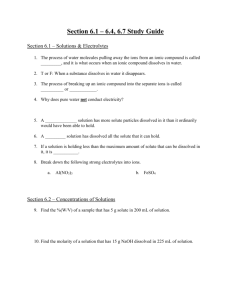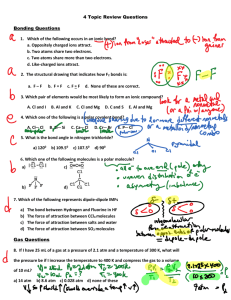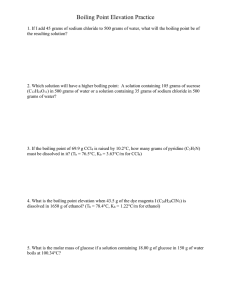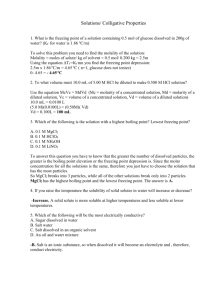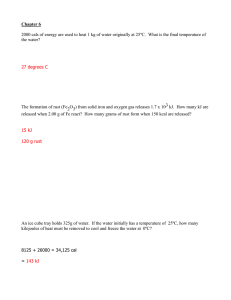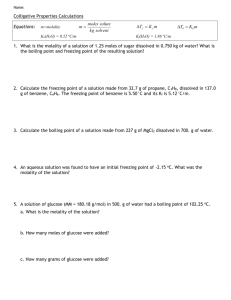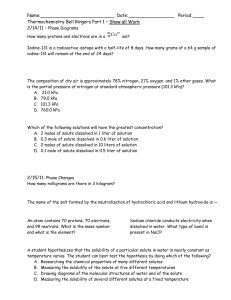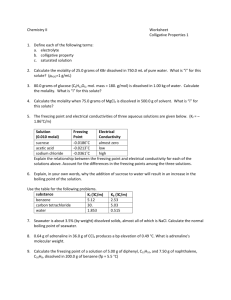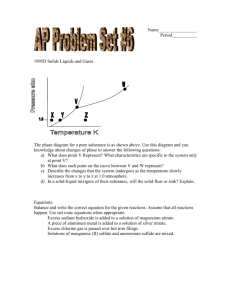EXAMPLES ON CHAPTER 12
advertisement
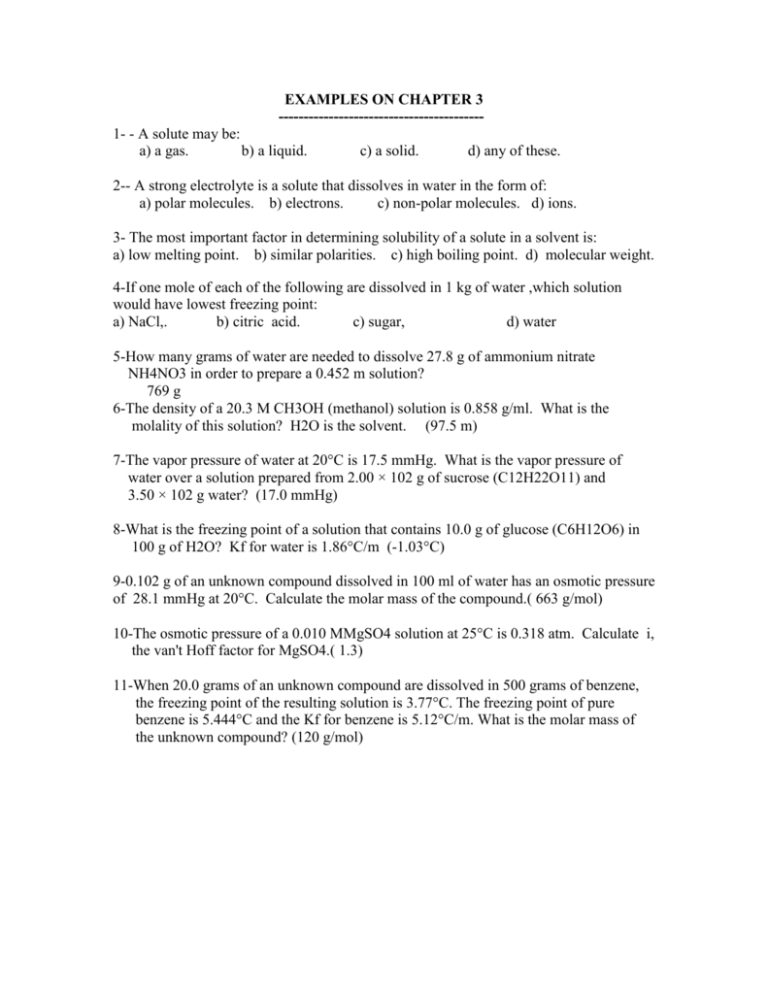
EXAMPLES ON CHAPTER 3 ----------------------------------------1- - A solute may be: a) a gas. b) a liquid. c) a solid. d) any of these. 2-- A strong electrolyte is a solute that dissolves in water in the form of: a) polar molecules. b) electrons. c) non-polar molecules. d) ions. 3- The most important factor in determining solubility of a solute in a solvent is: a) low melting point. b) similar polarities. c) high boiling point. d) molecular weight. 4-If one mole of each of the following are dissolved in 1 kg of water ,which solution would have lowest freezing point: a) NaCl,. b) citric acid. c) sugar, d) water 5-How many grams of water are needed to dissolve 27.8 g of ammonium nitrate NH4NO3 in order to prepare a 0.452 m solution? 769 g 6-The density of a 20.3 M CH3OH (methanol) solution is 0.858 g/ml. What is the molality of this solution? H2O is the solvent. (97.5 m) 7-The vapor pressure of water at 20°C is 17.5 mmHg. What is the vapor pressure of water over a solution prepared from 2.00 × 102 g of sucrose (C12H22O11) and 3.50 × 102 g water? (17.0 mmHg) 8-What is the freezing point of a solution that contains 10.0 g of glucose (C6H12O6) in 100 g of H2O? Kf for water is 1.86°C/m (-1.03°C) 9-0.102 g of an unknown compound dissolved in 100 ml of water has an osmotic pressure of 28.1 mmHg at 20°C. Calculate the molar mass of the compound.( 663 g/mol) 10-The osmotic pressure of a 0.010 MMgSO4 solution at 25°C is 0.318 atm. Calculate i, the van't Hoff factor for MgSO4.( 1.3) 11-When 20.0 grams of an unknown compound are dissolved in 500 grams of benzene, the freezing point of the resulting solution is 3.77°C. The freezing point of pure benzene is 5.444°C and the Kf for benzene is 5.12°C/m. What is the molar mass of the unknown compound? (120 g/mol)



